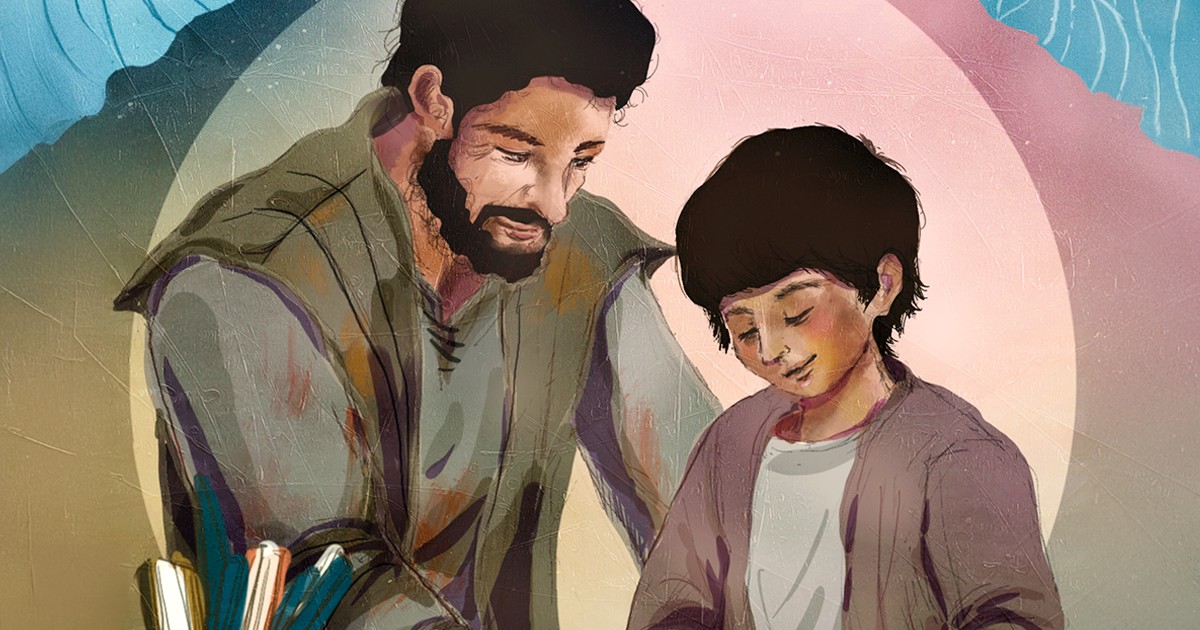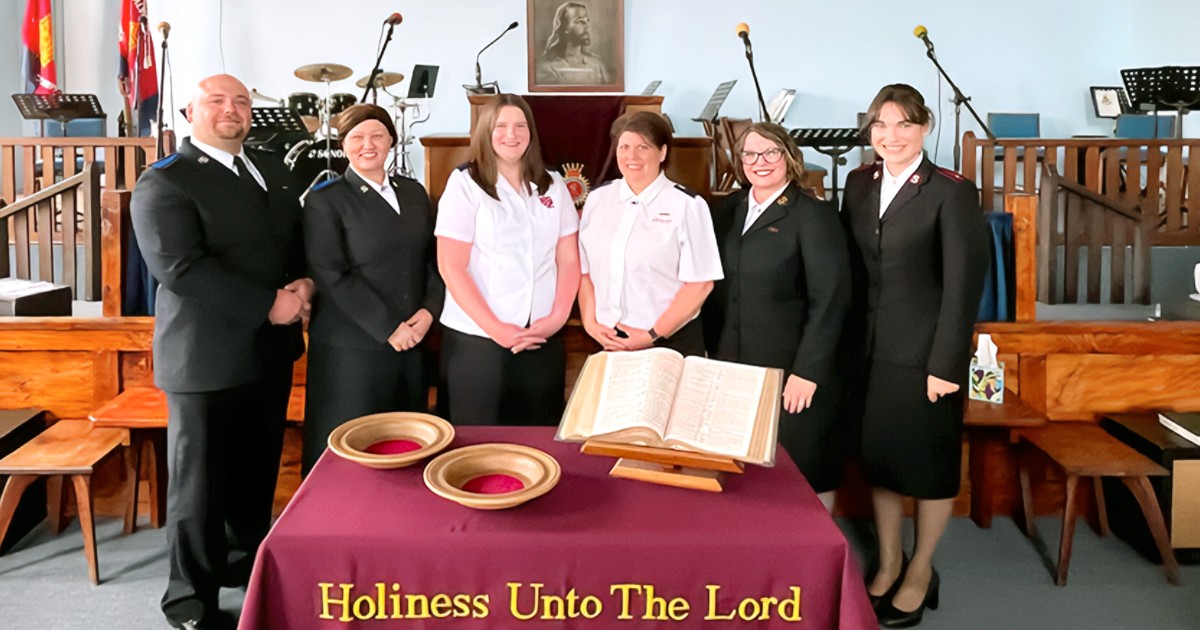From time to time, situations occur when being empathetic is the most important characteristic of a leader. The recent COVID-19 outbreak is just such a time. We are all called to be understanding of those we live with, not only in our local community but globally. In this instance, selfish actions will only result in the further spread of a virus that is having global impact. It is difficult to watch some individuals ignore social distancing requirements or buy out stock in our local grocery stores, while vulnerable members of our community are having difficulty acquiring the basic necessities. Where is the empathy in that?
The LEADS Leadership Capability Framework (visit salvationist.ca/leads) addresses “empathy” as a characteristic of leaders under the domain of DEVELOPING COALITIONS. All leaders must demonstrate empathy in working with others and developing purposeful partnerships. The DEVELOPING COALITIONS domain also examines how leaders demonstrate a commitment to clients and service; mobilize knowledge; and navigate socio-political environments. The ability to consider the needs of others has a great impact on the effectiveness of a leader in accomplishing these goals.
We recently shared a LEADS learning series with a group of Salvation Army leaders in the Ontario Central-East Division. One of the participants, Captain Kathleen Ingram, now corps officer at Kingston Citadel, was intrigued with one of our learning strategies called the “empathy toy.” In the following paragraphs, Captain Ingram describes how she was able to use this exercise to direct a group she was preparing to lead the following week.
While participating in the LEADS training sessions recently, we used the empathy toy to help create a cohesive team. Groups of three or four were asked to replicate a previously created wooden puzzle, despite being blindfolded and receiving only verbal assistance. The debriefing that followed was key, as participants were asked to consider not only their role, but the role of others, during the activity. The entire process was then repeated, with another debrief focusing on how participants changed their behaviour given their new learning.
Our group enjoyed the activity and I immediately began thinking about how I could use this tool in the emotional and spiritual care foundations course for emergency disaster services (EDS) training. After arranging to borrow the empathy toy, I created a script to adapt the material. It wasn’t difficult, considering empathy is one of the fundamental principles of emotional and spiritual care. I asked members of my staff to participate in a simulation and asked for their feedback on whether this activity helped them understand the need for empathy as a leadership characteristic.
The following week, I used the empathy toy during the EDS training, and it was well received. It helped the students engage in conversation around empathy, and their understanding of the role empathy plays in emotional and spiritual care became tangible.
Here are several other take-aways:
1. EDS, especially in the field of emotional and spiritual care, requires an extra dose of empathy when interacting with survivors of emergencies and disasters who are experiencing a great deal of stress.
2. EDS requires significant understanding of the role of others. It is helpful if you can empathize with other team members and volunteers.
3. EDS can be chaotic, and sometimes it feels as if you are indeed working blind.
4. EDS requires an incredible amount of teamwork.
5. EDS requires good communication— both giving and receiving instruction and details—while working in high stress environments.
As leaders, we must strive to be empathetic in all situations. Whether we are providing client service or trying to understand a particular problem, to lead effectively we must consider others and their circumstances. It’s a key part of being a Salvation Army that presents Christ’s message of love and hope for the world.
Paul Carew is the leadership development secretary. Captain Kathleen Ingram is the corps officer at Kingston Citadel in Ontario.
Photo: Radachynskyi/iStock via Getty Images Plus
The LEADS Leadership Capability Framework (visit salvationist.ca/leads) addresses “empathy” as a characteristic of leaders under the domain of DEVELOPING COALITIONS. All leaders must demonstrate empathy in working with others and developing purposeful partnerships. The DEVELOPING COALITIONS domain also examines how leaders demonstrate a commitment to clients and service; mobilize knowledge; and navigate socio-political environments. The ability to consider the needs of others has a great impact on the effectiveness of a leader in accomplishing these goals.
We recently shared a LEADS learning series with a group of Salvation Army leaders in the Ontario Central-East Division. One of the participants, Captain Kathleen Ingram, now corps officer at Kingston Citadel, was intrigued with one of our learning strategies called the “empathy toy.” In the following paragraphs, Captain Ingram describes how she was able to use this exercise to direct a group she was preparing to lead the following week.
While participating in the LEADS training sessions recently, we used the empathy toy to help create a cohesive team. Groups of three or four were asked to replicate a previously created wooden puzzle, despite being blindfolded and receiving only verbal assistance. The debriefing that followed was key, as participants were asked to consider not only their role, but the role of others, during the activity. The entire process was then repeated, with another debrief focusing on how participants changed their behaviour given their new learning.
Our group enjoyed the activity and I immediately began thinking about how I could use this tool in the emotional and spiritual care foundations course for emergency disaster services (EDS) training. After arranging to borrow the empathy toy, I created a script to adapt the material. It wasn’t difficult, considering empathy is one of the fundamental principles of emotional and spiritual care. I asked members of my staff to participate in a simulation and asked for their feedback on whether this activity helped them understand the need for empathy as a leadership characteristic.
The following week, I used the empathy toy during the EDS training, and it was well received. It helped the students engage in conversation around empathy, and their understanding of the role empathy plays in emotional and spiritual care became tangible.
Here are several other take-aways:
1. EDS, especially in the field of emotional and spiritual care, requires an extra dose of empathy when interacting with survivors of emergencies and disasters who are experiencing a great deal of stress.
2. EDS requires significant understanding of the role of others. It is helpful if you can empathize with other team members and volunteers.
3. EDS can be chaotic, and sometimes it feels as if you are indeed working blind.
4. EDS requires an incredible amount of teamwork.
5. EDS requires good communication— both giving and receiving instruction and details—while working in high stress environments.
As leaders, we must strive to be empathetic in all situations. Whether we are providing client service or trying to understand a particular problem, to lead effectively we must consider others and their circumstances. It’s a key part of being a Salvation Army that presents Christ’s message of love and hope for the world.
Paul Carew is the leadership development secretary. Captain Kathleen Ingram is the corps officer at Kingston Citadel in Ontario.
Photo: Radachynskyi/iStock via Getty Images Plus










Leave a Comment